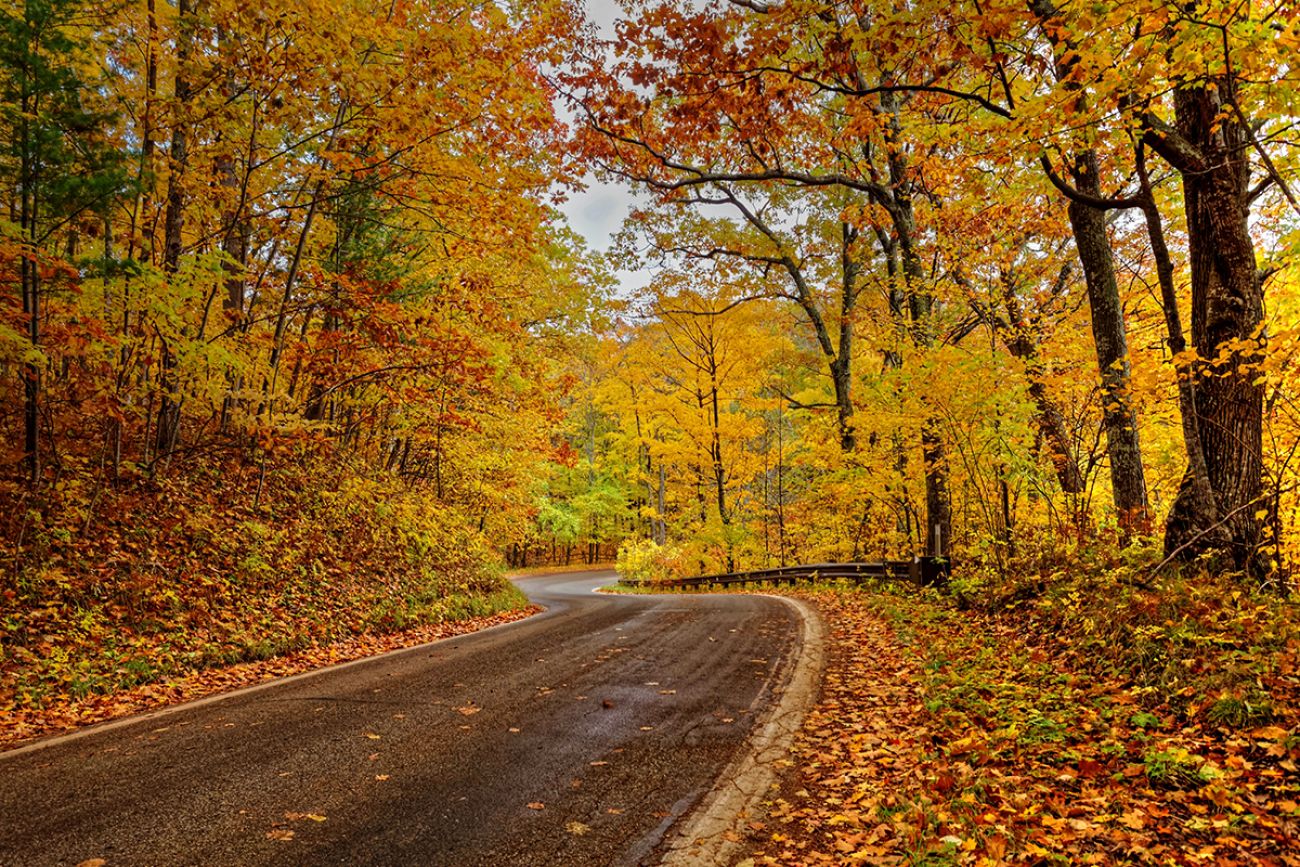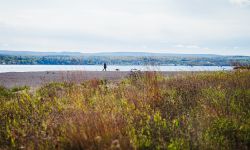Michigan fall colors 2023: Peak colors may be late. Blame El Niño

- Michigan trees start to change colors between late September and mid-October.
- Trees in the Upper Peninsula have already started changing colors.
- State parks, especially along the Great Lakes are some of the best places to watch the trees.
One of the best times of the year in Michigan — fall color season — may be delayed by warmer than usual temperatures.
But those same warm fall days and nights could mean even more vibrant colors than usual.
Leaves in some parts of the Upper Peninsula could peak within the next few weeks, with the first to peak traditionally being in the northwestern U.P. and the rugged region around Tahquamenon Falls.
Related:
- What's being done about plastic trash getting into the Great Lakes?
- The life of Peanut: Inside the story of the world’s oldest living chicken
- New federal money is the start of an effort to make Great Lakes coasts more resilient
Generally, color-changing season peaks in mid-October and runs through the month, depending on where you are in the state, but Emily Holm, plant physiologist and professor at Michigan State University said that the start date might be later, because of warmer temperatures caused by El Niño.
“Peak fall colors could be pushed slightly back because it's really those cold temperatures that promote the fall color and so if it is slightly warmer, then it would delay it a little bit,” she said.
Calls on Tuesday to merchants in Escanaba said trees in southwest U.P. were about two weeks away from peak, while merchants in northeast U.P. 's Newberry said the peak could start as soon as this weekend. Trees near Tahquamenon Falls State park have started to change colors but have another week or so before peak.
The National Oceanic and Atmospheric Administration predicts a 95 percent chance of a strong El Niño year. In these years, winters are drier and warmer because warm water blowing west along the equator is pushed back east. This causes the Pacific jet stream to move further south.
Places in North America, like Michigan, tend to be warmer during El Niño years. The last one was in 2016 and the average temperature that winter was about 33 degrees. The leaves start to change colors between 32 and 45 degrees fahrenheit at night.
“The biggest predictor is really just the fall temperatures overnight and the light that the leaves get,” Holm said.
Leaves in Northern and mid-Michigan are estimated for now to peak between Oct. 9 and October 16. Warmer temperatures in the west and southern regions of the Lower Peninsula mean peak color is often between Oct. 16 and Oct. 23.
Shorter days and colder nights help break down the enzymes in the leaves, which function at a certain temperature. Those enzymes signal the plant to start producing less chlorophyll, which is responsible for the green pigment of the plant. That is when red, yellow, orange and brown burst like fireworks across Michigan forests.
“The breakdown of chlorophyll, getting rid of that green, is a way that the plant can recycle the nutrients that are within those compounds” and store it during the winter, Holm said.
Trees preserve sugar from the chlorophyll that boost its metabolism which allows it to “hibernate” during long, harsh Michigan winters.
Trees that are on the outskirts of a forest or line to the side of major roads and highways tend to change colors first and be more red since they are exposed to more heat and sunlight.
Best places to see fall colors
Color changing season is very dependent on the region.
- Trees along Lake Superior at Tahquamenon Falls State Park and Porcupine Mountains have started to change color but will peak in the coming weeks.
- The Tunnel of Trees is 22 miles of colorful trees along M-119, state trunkline highway in northern Michigan.
- Ocqueoc Falls in northern Michigan is surrounded by hardwood forest filled with trees of various hues. It is the largest waterfall in the lower peninsula.
- Holland State Park overlooks Lake Macatawa where leaves will start to turn color between early and mid-October.
Michigan Environment Watch
Michigan Environment Watch examines how public policy, industry, and other factors interact with the state’s trove of natural resources.
- See full coverage
- Subscribe
- Share tips and questions with Bridge environment reporter Kelly House
Michigan Environment Watch is made possible by generous financial support from:
Our generous Environment Watch underwriters encourage Bridge Michigan readers to also support civic journalism by becoming Bridge members. Please consider joining today.
See what new members are saying about why they donated to Bridge Michigan:
- “In order for this information to be accurate and unbiased it must be underwritten by its readers, not by special interests.” - Larry S.
- “Not many other media sources report on the topics Bridge does.” - Susan B.
- “Your journalism is outstanding and rare these days.” - Mark S.
If you want to ensure the future of nonpartisan, nonprofit Michigan journalism, please become a member today. You, too, will be asked why you donated and maybe we'll feature your quote next time!






